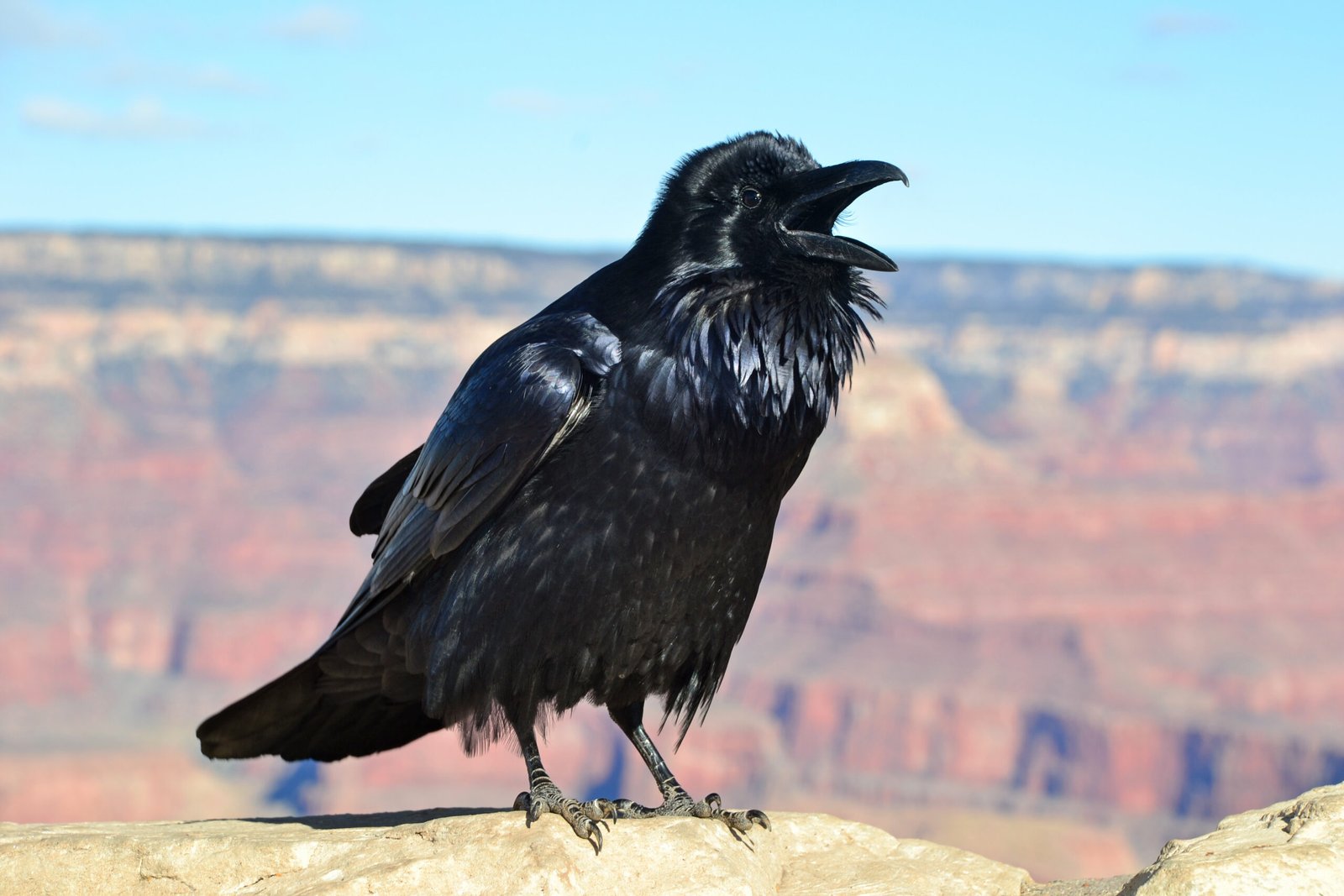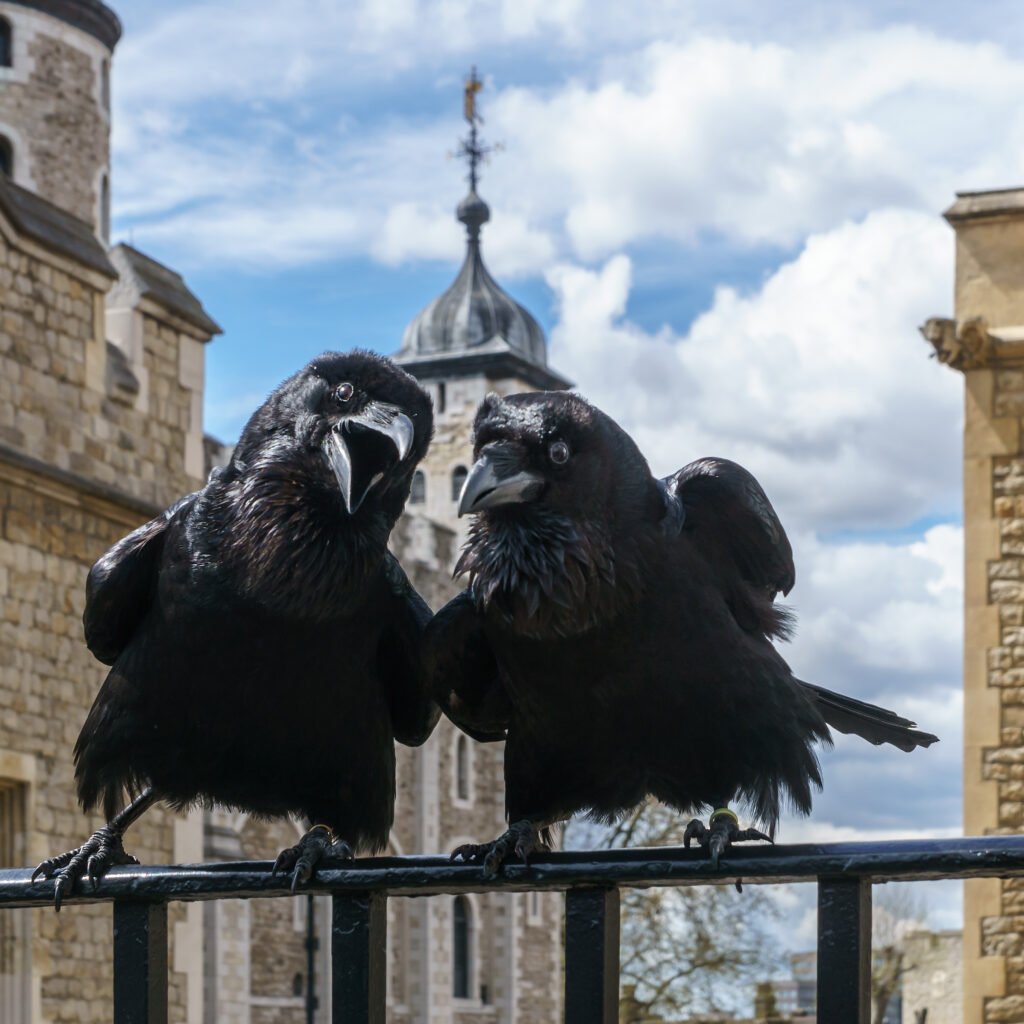Imagine standing in a quiet forest and hearing a low, rolling croak echo through the trees. Suddenly, a glossy-black bird swoops overhead, its wings beating with slow, deliberate power. Was that a crow or a raven? These two mysterious birds have sparked centuries of fascination, confusion, and even superstition. While many people use their names interchangeably, crows and ravens are not the same. In fact, the differences between them are as intriguing as the birds themselves—ranging from intelligence that rivals primates, to striking contrasts in size, sound, and behavior. Get ready to see these feathered geniuses in a whole new light.
Physical Size: More Than Just Feathers
At first glance, crows and ravens may seem nearly identical, but their size sets them apart in surprising ways. Ravens are noticeably larger, often measuring up to 27 inches from beak to tail, with an impressive wingspan that can reach four feet. In contrast, crows typically max out at about 20 inches and have a much shorter wingspan. If you spot a black bird that seems almost as big as a hawk, chances are you’re looking at a raven. Their hefty build and shaggy throat feathers contribute to their imposing presence, making them seem almost regal compared to the more compact, sleeker crows. Next time you see a group of black birds, look for the one that stands out by sheer size—it might just be a raven keeping quiet watch.
Beaks and Feathers: The Devil Is in the Details
Look closely at their beaks, and you’ll notice another major difference. Ravens have thick, curved beaks, almost like a powerful tool designed for tearing meat or prying open tough objects. Their beaks appear heavier and slightly arched, giving them a formidable look. Crows, meanwhile, sport slimmer, straighter beaks that are more suited for pecking at seeds, insects, and scraps. Feathers around the throat can also offer a clue. Ravens have shaggy throat feathers, sometimes called “hackles,” that stand out especially when they’re calling or displaying. Crows’ feathers are smooth and neat, lending them a tidier appearance. These subtle features can help even a novice birdwatcher tell the two apart.
Calls and Vocal Talents: Nature’s Sound Engineers
If you close your eyes and listen, the voices of crows and ravens tell two completely different stories. Crows are famous for their sharp, repetitive “caw-caw” calls that can echo through city streets and rural fields alike. Their vocalizations are generally higher-pitched and more urgent. Ravens, on the other hand, produce a deep, resonant “croak” that rolls through the air like distant thunder. Their calls are lower, often described as guttural or even haunting. But here’s where it gets exciting: both species are astonishingly talented vocal mimics. Ravens, in particular, can imitate human speech, other animal calls, and even mechanical noises. This vocal versatility is a window into their intelligence and adaptability.
Smarts That Rival Primates
When it comes to brainpower, crows and ravens are in a league of their own in the bird world. Studies have shown that these birds solve problems, use tools, and even plan for the future—a skill once thought limited to humans and great apes. Crows in Japan have been observed dropping nuts onto busy crosswalks, waiting for cars to run over them, and swooping down to collect the cracked shells once the light turns red. Ravens, too, have demonstrated their cleverness by working together to access hard-to-reach food or by hiding their food caches from prying eyes. Scientists have marveled at their ability to remember faces and hold grudges, making them unforgettable neighbors in both wild and urban settings.
Social Lives: Family, Friends, and Fierce Alliances

Crows are the ultimate socialites of the bird world. They thrive in large, complex family groups, often called “murders,” and rely on teamwork to find food and protect each other. Their gatherings can number in the hundreds, especially during winter roosts, creating a spectacle of sound and movement. Ravens, by contrast, are more solitary or found in pairs, especially outside of the breeding season. While young ravens may form playful gangs, adults typically stick to their mates. This difference in social structure shapes how each bird interacts with its environment and even how it responds to threats.
Flight Patterns: Soaring vs. Flapping

Gaze upward and you’ll quickly spot differences in how these birds move through the sky. Ravens are masterful fliers, often seen soaring and gliding gracefully with barely a wingbeat. They use thermals to rise high and perform playful acrobatics, such as barrel rolls and somersaults, that are almost unheard of in other birds. Crows, by comparison, have a more direct, steady flight, punctuated by rapid, rhythmic flapping. Their tails are fan-shaped, while ravens’ tails are wedge-shaped or diamond-like—a subtle but reliable clue if you catch a glimpse from below.
Habitats: Urban Hustlers and Wild Wanderers

Crows are the ultimate urban adapters, thriving in cities, suburbs, farms, and forests. They are bold and resourceful, often scavenging for scraps and even learning to recognize garbage collection schedules. Ravens, on the other hand, prefer wilder, more remote landscapes—mountains, deserts, forests, and vast open fields are their domain. While you might spot a raven in a city, it’s far less common. This preference for solitude and wildness contributes to the raven’s mysterious reputation, while crows have become a familiar—if mischievous—part of everyday life.
Nesting and Raising Young: Contrasts in Care
Both crows and ravens are attentive parents, but their nesting habits reveal key differences. Crows build their nests high in trees or on tall structures, using sticks, twigs, and whatever urban materials they can find. They often nest in groups, with older offspring helping to raise the new brood—a remarkable example of family cooperation. Ravens choose more secluded spots, such as cliff ledges or tall conifers, far from human eyes. They fiercely defend their nests, sometimes even against much larger animals. While both species show deep devotion to their chicks, the crow’s cooperative approach stands in stark contrast to the raven’s fiercely independent parenting style.
Diet: Omnivores With a Twist
Crows and ravens are both omnivores, but their diets reflect their different lifestyles. Crows are opportunistic feeders, thriving on everything from insects and seeds to garbage and roadkill. Their adaptability is astonishing—they’ve even been known to use tools to extract food from hard-to-reach places. Ravens are also highly adaptable but lean towards a more carnivorous diet, often scavenging on large carcasses and hunting small animals. In wild settings, ravens have been seen following wolves to feed on leftovers, a testament to their boldness and clever strategy in the food chain.
Folklore and Symbolism: Birds of Mystery and Magic
Across cultures and centuries, crows and ravens have occupied a unique place in human imagination. Ravens appear in Norse mythology as Odin’s wise messengers, while crows are often seen as omens or tricksters in Native American legends. In literature and art, their jet-black feathers and piercing eyes have inspired countless tales of magic, mystery, and even mischief. Some see crows as harbingers of change, while ravens symbolize wisdom, transformation, and sometimes, a brush with the unknown. These stories are as much a part of these birds’ identities as their feathers or calls.
How to Tell Them Apart: Quick Tips for Curious Birdwatchers

If you want to impress your friends or simply satisfy your curiosity, there are a few handy tricks for telling crows and ravens apart. Remember these key differences:
– Size: Ravens are bigger, bulkier, and more imposing.
– Tail Shape: Crows have fan-shaped tails; ravens’ tails are wedge-shaped.
– Voice: Crows “caw,” ravens “croak.”
– Social Behavior: Crows gather in large groups; ravens are more solitary.
– Flight: Crows flap more, ravens soar and glide.
With practice, these details become second nature, transforming a walk in the park or a hike in the woods into a thrilling detective adventure.
The Lasting Impact of Crows and Ravens on Our World
Crows and ravens are more than just birds—they’re living proof of nature’s resilience, intelligence, and adaptability. Their ability to outsmart, outlast, and outmaneuver so many challenges makes them a symbol of survival and ingenuity. Whether they’re solving complex puzzles, dazzling us with aerial acrobatics, or simply watching from a city lamppost, these birds remind us of the wild intelligence that surrounds us every day. Next time you see a black bird perched above, will you look a little closer?




